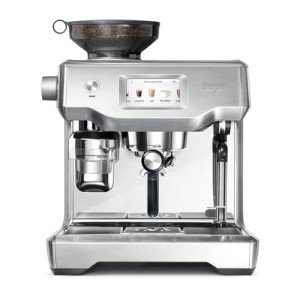The Art of Italian Espresso Machines: A Brewed Tradition
Italian espresso machines are not simply appliances; they are an integral part of Italy's abundant coffee culture, representing a mix of artistry, engineering, and design. Coffee fanatics around the world recognize the value of high-quality espresso, a staple of Italian life and food. This article checks out the history, mechanics, types, and elements to think about when purchasing an Italian espresso machine, reflecting the depth of this cherished drink and its brewing techniques.
History of Espresso Machines
The espresso machine's evolution dates back to the early 20th century in Italy, where coffee was not merely a beverage however an essential social routine. The preliminary attempts to brew espresso started with basic, stove-top models, gradually developing into complicated machines that could replicate the best brew.
- 1901-- The First Espresso Machine: The first steam-powered espresso machine, called the "Ideale," was developed by Luigi Bezzera. Home Espresso Machines marked a turning point in espresso developing.
- 1938-- The Lever Machine: The introduction of the lever machine made it much easier to control the pressure used in espresso extraction, boosting taste consistency.
- 1947-- The Automatic Machine: Reaching more consumers, Gaggia launched the very first automatic espresso machine, more promoting espresso bars.
- 2007-- The Digital Age: Technological developments led to the birth of fully programmable machines, enabling users to personalize their brewing settings to attain a customized coffee experience.
Secret Features of Italian Espresso Machines
Italian espresso machines embody accuracy, craftsmanship, and development. Here are some essential elements that highlight their significance:
| Feature | Description |
|---|---|
| Boiler Type | Identifies how heat is produced and maintained. Typical types include single boiler, dual boiler, and heat exchanger. |
| Group Heads | Where the coffee is brewed; commercial machines frequently have multiple group heads for performance. |
| Pressure Control | Crucial for accomplishing the ideal espresso; most machines operate at 9 bars of pressure. |
| Frothing Capabilities | The steam wand permits milk frothing, important for drinks like cappuccino and latte. |
| Develop Quality | The materials used (stainless steel, brass, etc) impact toughness and heat retention. |
Types of Italian Espresso Machines
Selecting the ideal machine hinges on user preferences, budget, and planned use. Below are the primary kinds of Italian espresso machines:
Manual Espresso Machines
- Pros: Offer complete control over the brewing process, enabling a tailored touch.
- Cons: Require skill and practice, can be labor-intensive.
Semi-Automatic Machines
- Pros: Provide a balance between automated and manual processes; users manage water flow.
- Cons: Can have a steeper learning curve than fully automatic machines.
Completely Automatic Machines
- Pros: Simplify the brewing process with push-button operations; perfect for beginners.
- Cons: May sacrifice some of the nuances of manual developing.
Super-Automatic Machines
- Pros: Grind, tamp, brew, and froth automatically; hassle-free for busy lifestyles.
- Cons: Less control over the brewing variables, potential for a less authentic espresso experience.
Purchasing Guide: Factors to Consider
Selecting the perfect Italian espresso machine can be daunting, but considering the following aspects can streamline the decision-making procedure:
- Budget: Italian espresso machines vary from affordable to high-end designs, so set a budget upfront.
- Usage Frequency: Evaluate how typically you will use the machine; daily users might want a more long lasting alternative.
- Area: Measure your cooking area or counter space; some machines can be large and need enough clearance.
- Maintenance: Consider ease of cleansing; machines with removable parts or integrated cleaning functions may reduce maintenance.
- User Skill Level: Beginners might prefer completely or semi-automatic machines, while experienced baristas can manage manual machines.
- Brand name Reputation: Research brands known for quality, such as Breville, Gaggia, and La Marzocco.
Popular Italian Espresso Machine Brands
Italian workmanship is renowned for producing a few of the best espresso machines worldwide. Here are top brands worth considering:
- Gaggia: Known for its home espresso machines and affordability.
- La Marzocco: A premium brand name understood for its commercial-grade machines and innovative innovation.
- Rancilio: Renowned for its resilient construct and professional-quality machines appropriate for home and commercial use.
- Sage/Breville: Offers advanced features and user-friendly designs, perfect for both amateurs and lovers.
FAQs
What is the difference between espresso and regular coffee?
Espresso is a concentrated coffee brewed by requiring hot water through finely-ground coffee under pressure. It has a thicker consistency, richer taste, and higher caffeine concentration than regular coffee.
Can I make milk-based beverages with an espresso machine?
Yes, lots of Italian espresso machines include a steam wand to froth milk for drinks like cappuccinos, lattes, and macchiatos.
How frequently should I clean my espresso machine?
Regular upkeep is important. Normally, a comprehensive cleansing is recommended every few weeks, while descaling should be done every 1 to 3 months, depending on water hardness.
What is the perfect pressure for developing espresso?
The ideal pressure for developing espresso is around 9 bars. This pressure makes sure the optimum extraction of flavors from the coffee premises.
Are more pricey machines worth the financial investment?
Higher-end machines frequently use much better materials and technology, offering improved durability and more constant outcomes. For major coffee fans, purchasing an excellent machine can raise the espresso experience considerably.
Italian espresso machines are far more than mere developing gadgets; they are an event of a cultural custom that has actually affected coffee consumption worldwide. With different models available to fit any user's needs-- varying from novices to experienced baristas-- there is an Italian espresso machine completely suited for everybody. As you embark on your espresso journey, comprehending the history, mechanics, and alternatives will enhance your experience and appreciation for this time-honored beverage. Whether you look for to recreate a coffee shop ambiance in the house or improve your brewing technique, these machines can delivering memorable cups of espresso adorned with the rich history of Italian coffee culture.

